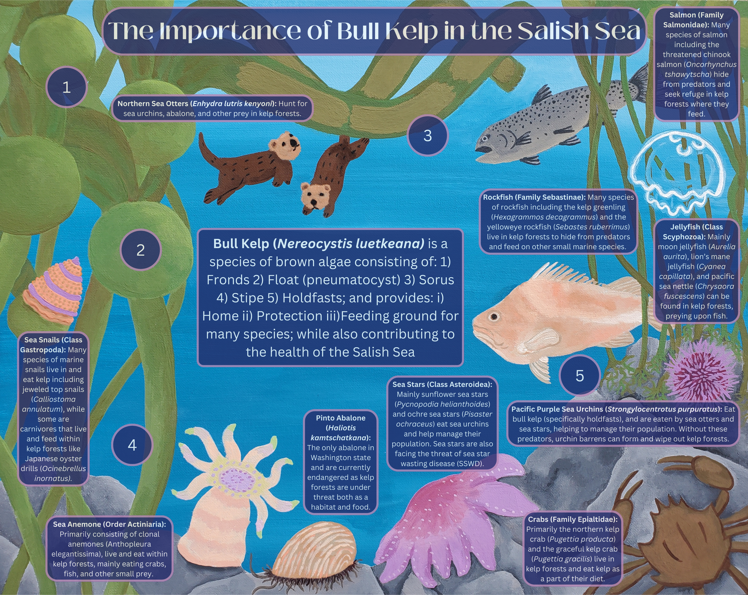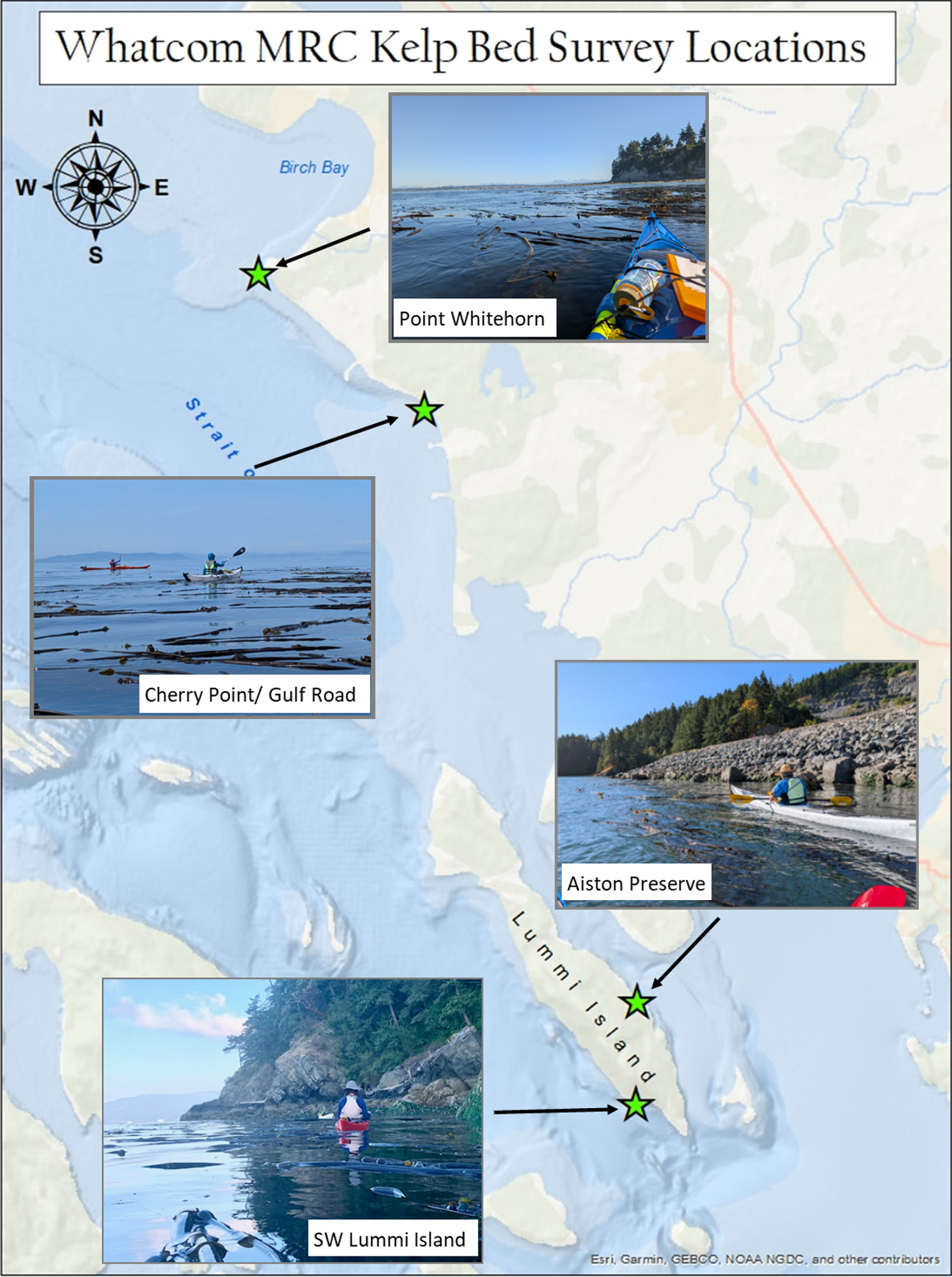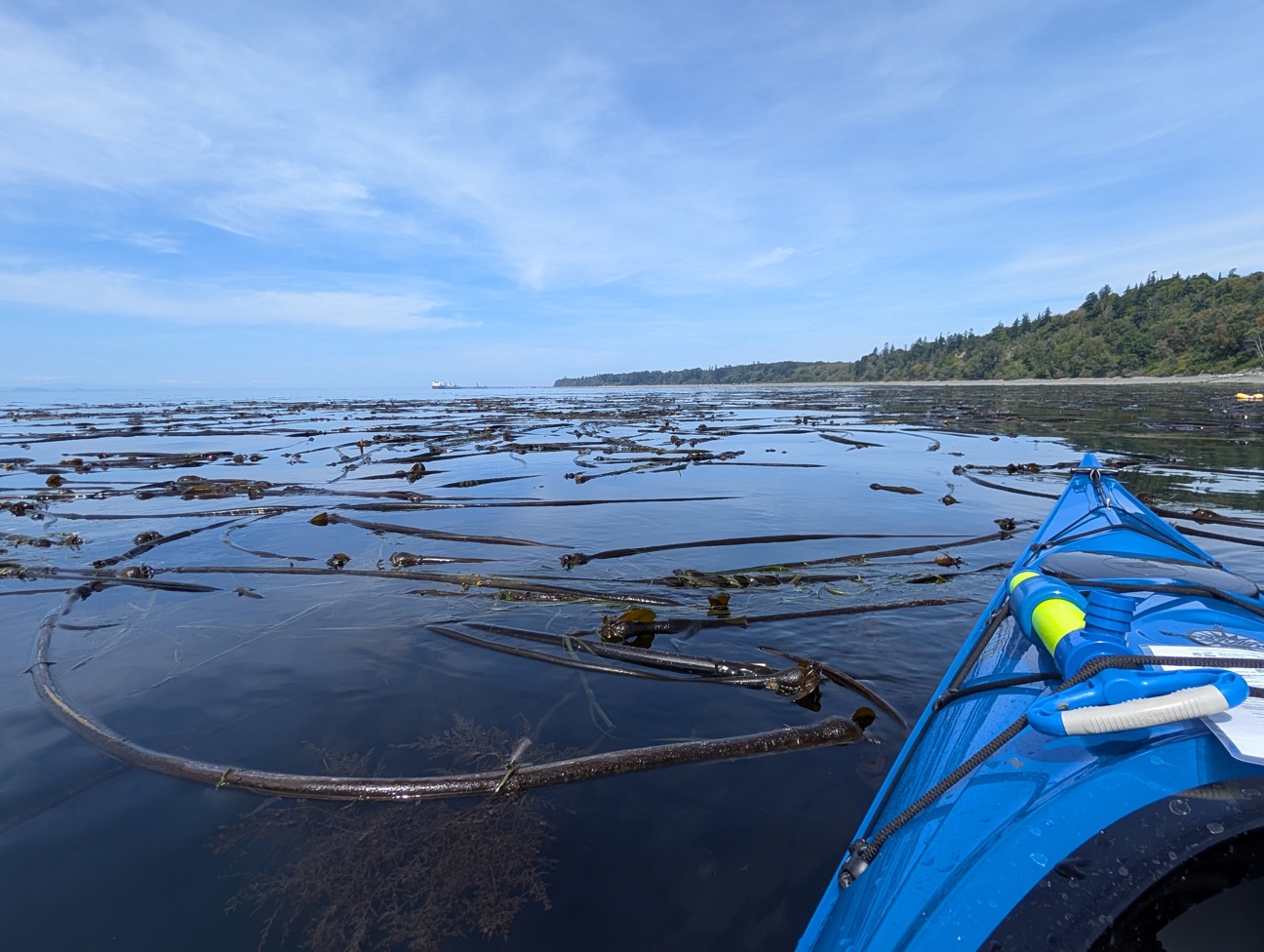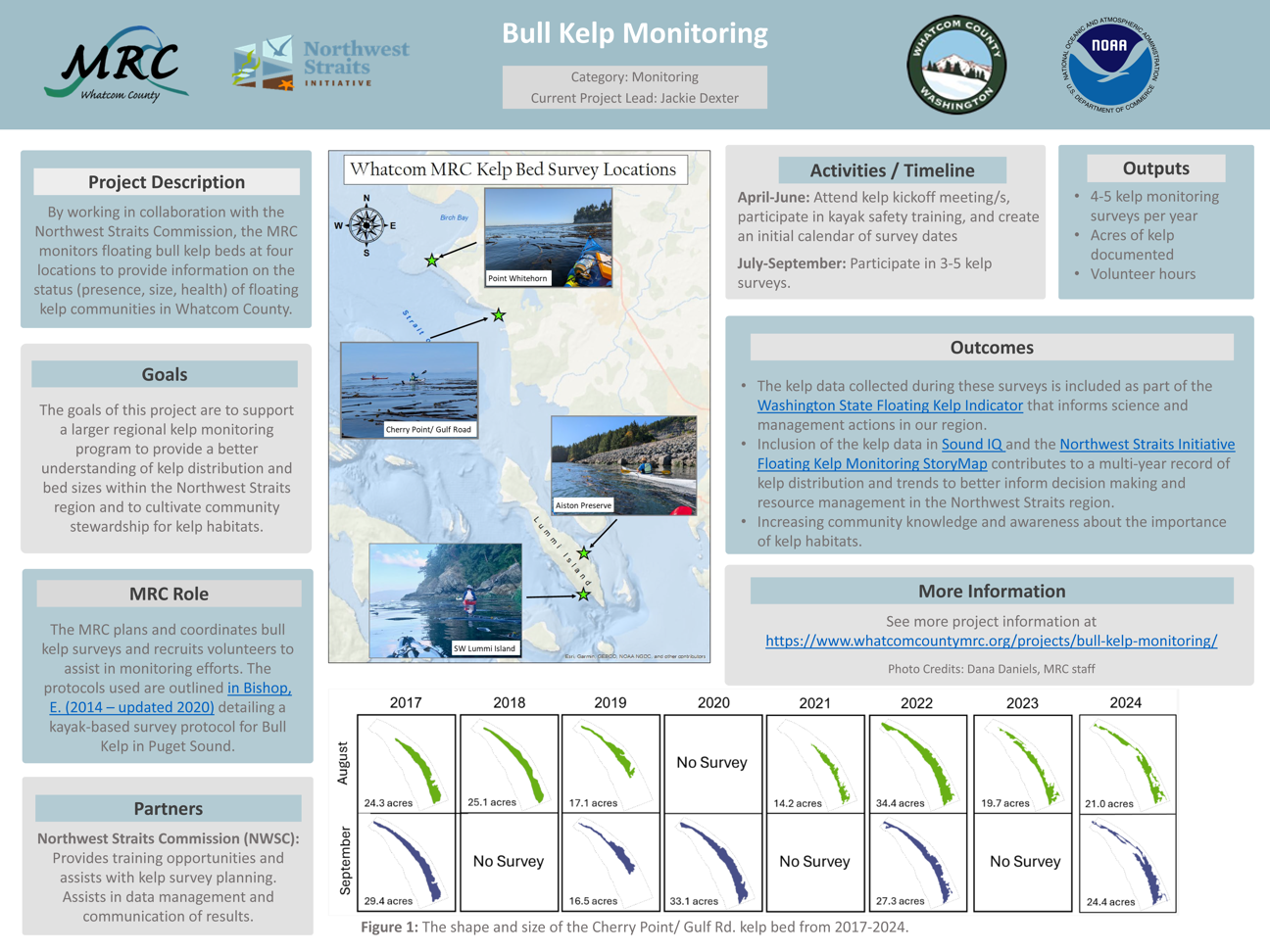
The Importance of Bull Kelp in the Salish Sea
As part of her Marine Conservation capstone project at Western Washington University, Lee Dexter chose to complete a visual project on kelp conservation. Lee completed a painting of common species found in the bull kelp ecosystem in the Salish Sea. The goal was to develop a publicly available display of the importance of bull kelp in the Salish Sea and to show connections with the bull kelp forest ecosystem.
View the info graphic full screen




